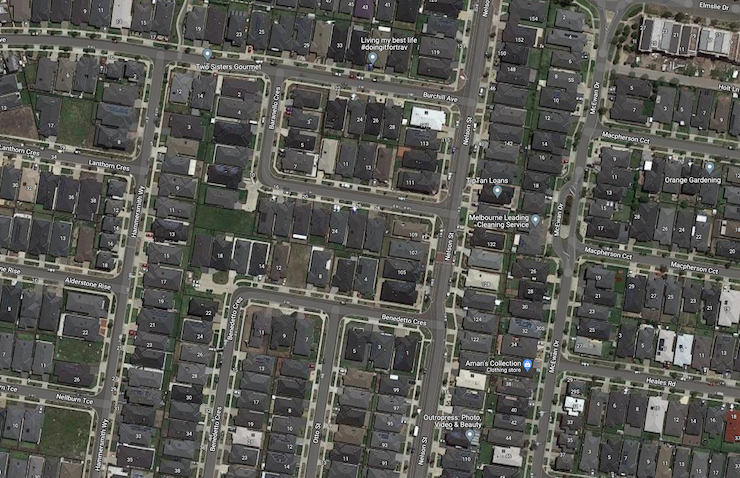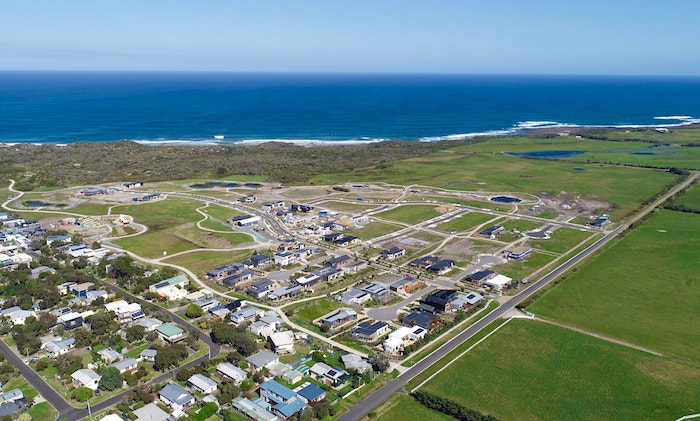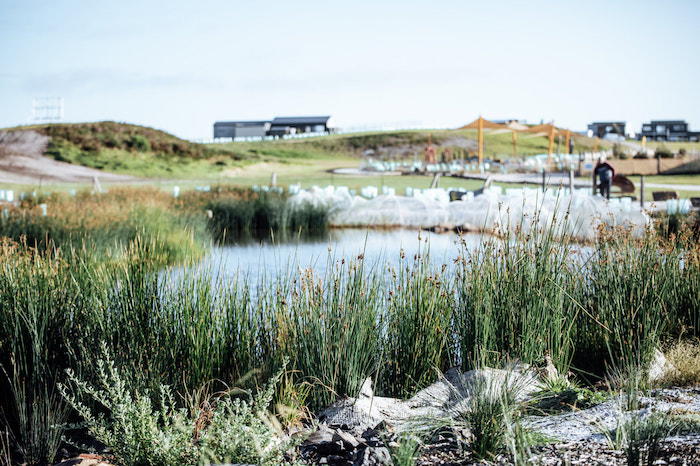The other day I was asked whether I was happy that the US President was…
Biodiversity Sensitive Urban Design and the silence of our political parties
Australia is in the last week of a federal election campaign, which has been marked by a disturbing absence of any policy vision by either main party which might address the most important issues confronting society and our land. Hopefully, the conservatives will get their marching orders this coming weekend (I have scheduled a rare glass of champagne around 22:00 on Saturday, when the result should be known) and the worst government in my lifetime will be gone. The problem is the Labor opposition is also short of policy mission. They have been too scared to enunciate anything much worth thinking about on climate, housing, education, health care, urban planning etc because, as the main narrative goes, they feared being wedged by the conservative government who lacks any remotely acceptable. The rival explanation for Labor’s timidity is that they are not committed to root-and-branch reform because they are inherently neoliberal themselves – a light version of the conservatives – without the extreme right tendencies on gender and those sorts of issues that dominate conservative politics. So, for whatever reason, the main challenges ahead are not being prosecuted by the major parties, which means our society will just be compounding the unsustainable evolution under the neoliberals and the price we will increasingly pay is rising.
Dominating public discussion recently has been the fact that the inflation rate has risen to 5.1 per cent and so the government has brought in a few measures to reduce the ‘cost of living pressures’.
So we get some ridiculously low cash transfer payment which does little.
We get a temporary cut in the fuel excise (tax) that means people still use their cars too much including driving children to school in large SUVs that eat up the fuel.
And not much else.
I have proposed the government announces that all public transport in Australia will become free forever immediately, which would accomplish short term cost of living relief (from the oil price rises) as people substitute away from using cars to commute etc and take trains and trams which have excess capacity.
But it would also accomplish longer term goals of reducing carbon emissions and divert public infrastructure spending away from road and freeway building, which just encourages more cars and absorbs natural bushland, parks, etc to accommodate the extra tarmac.
During the lockdown-stage of the pandemic, emissions fell dramatically and people could walk around their urban environments with much cleaner air and obviously better health outcomes as a result.
I had lunch with a journalist friend last Thursday in Melbourne and he said in response “well the trains would get overcrowded”. They would get more people on them that currently that is for sure and the government would have an incentive to increase the coverage and frequency of the mass transit systems.
It would be much better than commuting by car from the outer suburbs of our spread-out cities for hours per day in shocking gridlocked traffic.
But the government’s response is to just reduce the cost of petrol for a few months and build more freeways.
Another major issue – that spans the cost of living question and the environmental sustainability challenge is housing.
Australian governments (both federal and state/territories) have been obsessed with pursuing fiscal surpluses for several decades as well as outsourcing and privatising everything public of value that they can identify.
The first consequence has been a reduction in investment in low-income housing (so-called ‘social housing’).
Social housing is designed to provide secure and affordable accommodation for those who cannot afford to purchase housing in the open market as a result of their family income.
It was a tradition in Australia that the the state would provide such housing to allow families to have reasonable living spaces to bring up families, and, in many cases, provide the opportunity for the family to save up to allow them to transit into the private market while still enjoying a decent residence.
I grew up on a public housing estate and while the standard of accommodation was basic, we at least had housing security.
That all changed from the 1980s as states opted to cut the construction of new social dwellings (one of the consequences of the obsessive fiscal surplus pursuit).
I got tired of Treasurers claiming they had to stop investing in housing to cut borrowing so they could preserve the AAA-rating from the corrupt rating agencies, without acknowledging that the AAA-rating was irrelevant (using their own flawed logic) if they weren’t borrowing anyway.
The problem has magnified with a massive shortfall in social housing evident.
Various estimates of the current shortfall exist – depending on assumptions.
One study from the – City Futures Research Centre – at the UNSW, estimated that between 2011 and 2016, “government expenditure on social housing decreased 7 per cent” (Source).
They estimated that a deficit of 650,000 social housing units would be experienced to 2035.
Other estimates suggest a current shortfall of 450,000 houses. 155,141 households were on the waiting list (most recent data) in 2020, although that is an underestimate. The proportion of ‘greatest need’ has risen from 28 per cent of those on waiting lists in 2014 to 37.7 per cent in 2020 (and rising fast).
The current federal government is proposing nothing in this regard, other than to allow people to eat into their superannuation savings to fund a deposit in the inflated private market.
Most of those who need social housing don’t have superannuation balances worth talking about.
The Labor opposition is promising just 30,000 new social houses.
Pittance.
As a result of the way the various governments have managed the housing portfolios as they have chased surpluses and cut government investment spending growth, we have now seen housing become ridiculously expensive in Australian cities, which has created a wealth divide between those who own and those who do not, as well as ensuring households are carrying record levels of debt (which makes their financial stability precarious to say the least) and locking out the young Australians from the decent housing.
It is, as they say, a clusterf***.
Moreover, the neoliberal era has seen an even greater bias in planning and zoning rules to favour property developers, who erect large swathes of cheaply built houses on the edges of our cities, which then inflate in value and deliver these characters massive profits.
But at what cost to the future?
A massive cost.
I saw an aerial shot of a development on the outskirts of Melbourne recently which shocked me.
Here is a snapshot of such a typical housing development – about an hour out of the city in good traffic – so long commutes.
You could play ‘spot the tree game’ and not record a single observation.
The typical outer-suburban development that corrupted councils have approved involves carbon-intensive houses that occupy most of the building space, leaving very little green space or play space.
These large houses are energy monsters. The fill up formerly green spaces with concrete, roads and roofs. In this particular development there is very little solar installed (usually because the families cannot afford the installation because they are already in massive debt).
The houses must only achieve a modest energy rating under the National Construction Code, which means they are leaky and require air conditioners in summer and heating in winter, often using gas.
Our approach to urban design and development has been completely corrupted by the way the developers have captured local councils. In Newcastle, we are currently fighting a ridiculous proposal to overdevelop a small urban area with a energy eating set of towers that will choke up the environment and destroy the local amenity.
The developer will make millions and the community will lose.
At the lunch I mentioned above with my journalist friend, we talked about urban design and what policies could be developed by government to improve all this housing malaise.
I said I would like the federal government – the currency issuer – to reform the – Nationwide House Energy Rating Scheme – which “measures a home’s energy efficiency to generate a star rating”.
Under NHERS, “The higher the star rating, the less energy needed to heat and cool the home to keep it comfortable.”
Currently, under the National Construction Code all new residential dwellings in Australia (Except NSW and NT) must achieve a minimum of a 6-star rating, which means they are not very efficient at all.
I proposed that the code be reformed to outlaw any housing below 8 star energy rating.
Building better properties (higher star ratings) is more expensive and so I also proposed that the government create a fund to ensure that all new sustainable developments would be accessible to low income families.
This would fit in with the concept of Biodiversity Sensitive Urban Design (BSUD) which I have been increasingly studying over the last year or so.
This Report – Biodiversity Sensitive Urban Design – from researchers at the RMIT Centre for Urban Research is a good starting point.
We learn that:
Biodiversity Sensitive Urban Design (BSUD) is a protocol for urban design that aims to create suburbs that are a net benefit to native species and ecosystems through the provision of essential habitat and food resources.
The suburban development pictured above – typical of the way we are increasing the housing stock – is the anathema of BSUD.
It offers no biodiversity, eliminates ‘nature’ from the urban landscape, creates massive heat sinks, requires increased drainage solutions to prevent localised flooding, and produces inefficient housing that further increases carbon emissions.
The Report (cited) notes that in the case of Victoria:
The native temperate grasslands of the Victorian Volcanic Plain are amongst the most endangered ecosystems in Australia. More than 99% of the original extent has been cleared or converted to agriculture, and less than 0.1% remains in good condition. Much of the remaining grassland
exists in areas designated as growth corridors for Melbourne, and thus, these grasslands and the species that inhabit them are threatened by urban development.
So a major action is required now to regenerate the land and rethink the way we develop our urban spaces.
What have the major political parties to say on this?
Nothing.
A good model for BSUD is one that I am part of in regional Victoria – The Cape.
The Age newspaper article (December 5, 2020) – Super-sustainable housing development The Cape at Cape Paterson ripens in the time of COVID – labelled ‘The Cape’:
Australia’s most sustainable housing development.
The development on the coast south east of Melbourne (my favourite area in the world) was formerly a 40ha dairy farm which had left the landscape barren with low biodiversity.
Cape Paterson, the local village is on the coast and a holiday town with a small resident population.
The developers (environmental activists) purchased the farm and after many years of resistance from council managed to persuade them to approve the sustainable development.
The land area might typically contain 900 odd houses (along the lines in the photo above) but this development will only have 220 housing sites, with more than 50 per cent of the estate used for the community farm, natural space, habitat regions, wetland restoration and more nature-enhancing spaces.
Here is a photo of the early stages of the development – much more progress has been achieved and the final stage is now coming to fruition.
The Community farm provides organic food security for residents and others.
Here is a discussion paper (September 2020) on the Farm – The Cape Community Farm Growing A Sustainable Garden.
Former paddocks have been “transformed into restored wetlands and new habitat areas”.
Here is an example:
All the housing must meet minimum energy ratings (above 7.5 and preferably higher) – and all rely on thermal mass, smart location, and good design to achieve the passive status.
Houses that are say 8-star rated overall, are mostly much higher than that (closer to 10) and the difference is because some house designs to fit the block need hallways to transit between some sections of the house. The hallways bring down the rating while the functional living space is at the highest level of efficiency. I have personal experience in this issue.
Residents pay a higher building cost but then enjoy running their houses at an estimated cost of only 15 per cent the average running cost of a home in Victoria.
The Cape will become a model for urban development in Australia but it will still require massive government intervention (regulative shifts and funding) to make it a reality for the nation.
This article in the Hort Journal (April 5, 2022)- The Cape – A zero emissions housing community – provides a good account of what is happening in BSUD terms at this development.
Conclusion
The problem is that neither political party is prepared to take on issues that will define the future path of our society.
We simply cannot keep depriving people of housing per se, and, allowing the sort of developments that create massive profits for developers while create zero biodiversity in our landscapes and shoddy, inefficient housing.
Yes, the outlay on a sustainable housing project for residents is higher. But that can easily be funded by government as a display of leadership.
That should become a priority for the federal government to ensure all families can live in such developments, rather than see them restricted to high-income households.
Neoliberalism is myopic.
Part of the ‘cost of living squeeze’ right now is the result of poor decisions in the past – reliance on cars, underinvestment in mass transit systems, and poor zoning and housing policies.
Developments such as The Cape presents an alternative model for the future. It will allow professionals like me to work remotely while minimising our ecological footprint.
And, ultimately, it will result in cheaper housing over the lifetime of the asset and much healthier natural landscapes.
That is enough for today!
(c) Copyright 2022 William Mitchell. All Rights Reserved.



With the current political parties, bankrolled by corporate money and increasingly biased toward their interests (liberal parties don’t even try to disguise it), we won’t be fighting climate change.
As a matter of fact, I read somewhere that we never consumed so much fossil fuels as now.
As a matter of fact, we are now in a new oil crisis, as the producers are closing the tap and letting us now that we are much more dependent on oil as we were back in 2019.
And, as we keep discussing if we are in a wage-price spiral or in a price-wage spiral, oil producers and traders are amassing record-breaking profits, which is the measure of the failure of the current political parties.
Greater Melbourne is already overpopulated, even within current migration settings! Free pubic transport fixes just one problem, but glosses over the substantive issue of overpopulation.